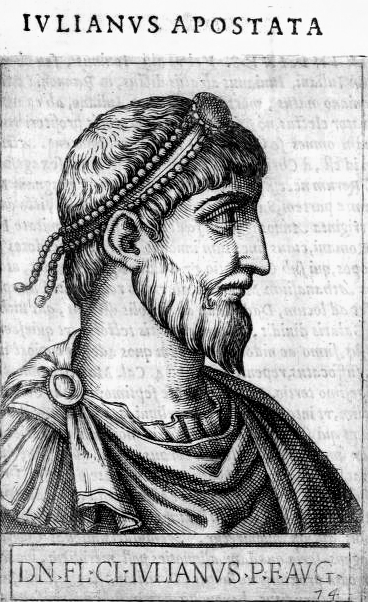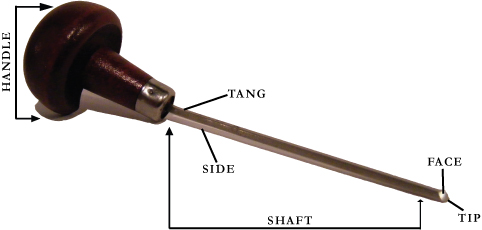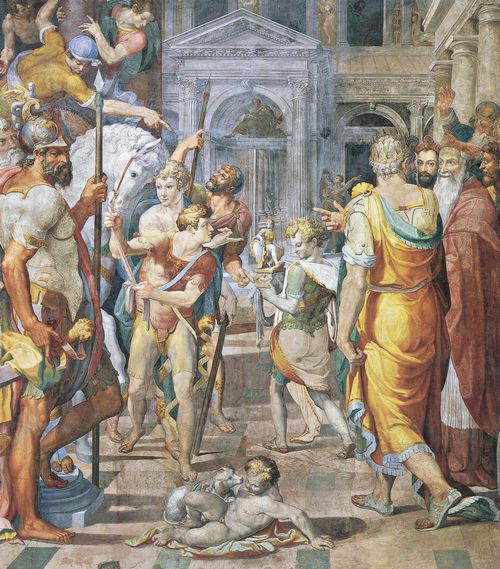|
Giovanni Battista De'Cavalieri
Giovanni Battista de'Cavalieri (1526–1597), an Italian engraver, was born at Villa Lagarina and died at Rome. His style of engraving resembles that of Aeneas Vico. Many of his plates are copies after the great Italian masters; they are etched, and finished with the graver. He was very laborious, and his plates number nearly 380. The following are those most worthy of notice. *The Frontispiece, and Heads of the Popes, for the ''Vite de' Pontifici''. *Thirty-three plates of the ''Ruins of Rome''; after Dossio. 1579. *Fifty-eight plates of the Ancient statues of Rome ''Antiquarum statuarum urbis Romae''. 1561 *A series of plates entitled ''Beati Apollinaris Martyris primi Ravennatum episcopi Res gestae''; after N. Circignani. 1586. *''Ecclesiae Anglicanae Trophae''; after the same. *''Christ among the Doctors''; supposed to be from his own design. *''The Last Supper''; the same. *''The Image of the Virgin of Loreto''. 1566. *''The House of Loreto, and the Miracles wrought there ... [...More Info...] [...Related Items...] OR: [Wikipedia] [Google] [Baidu] |
Iulianus Apostata
Julian may refer to: People * Julian (emperor) (331–363), Roman emperor from 361 to 363 * Julian (Rome), referring to the Roman gens Julia, with imperial dynasty offshoots * Saint Julian (other), several Christian saints * Julian (given name), people with the given name Julian * Julian (surname), people with the surname Julian * Julian (singer), Russian pop singer Places * Julian, California, a census-designated place in San Diego County * Julian, Kansas, an unincorporated community in Stanton County * Julian, Nebraska, a village in Nemaha County * Julian, North Carolina, a census-designated place in Guilford County * Julian, Pennsylvania, an unincorporated community and census-designated place in Centre County * Julian, West Virginia, an unincorporated community in Boone County Other uses * ''Julian'' (album), a 1976 album by Pepper Adams * ''Julian'' (novel), a 1964 novel by Gore Vidal about the emperor * Julian (geology), a substage of the Carnian stage of the ... [...More Info...] [...Related Items...] OR: [Wikipedia] [Google] [Baidu] |
Engraving
Engraving is the practice of incising a design onto a hard, usually flat surface by cutting grooves into it with a Burin (engraving), burin. The result may be a decorated object in itself, as when silver, gold, steel, or Glass engraving, glass are engraved, or may provide an Intaglio (printmaking), intaglio printing plate, of copper or another metal, for printing images on paper as prints or illustrations; these images are also called "engravings". Engraving is one of the oldest and most important techniques in printmaking. Wood engraving is a form of relief printing and is not covered in this article, same with rock engravings like petroglyphs. Engraving was a historically important method of producing images on paper in artistic printmaking, in mapmaking, and also for commercial reproductions and illustrations for books and magazines. It has long been replaced by various photographic processes in its commercial applications and, partly because of the difficulty of learning th ... [...More Info...] [...Related Items...] OR: [Wikipedia] [Google] [Baidu] |
Villa Lagarina
Villa Lagarina is a ''comune'' (municipality) in Trentino, northern Italy, located about southwest of Trento. Villa Lagarina borders the following municipalities: Cavedine, Cimone, Arco, Drena, Pomarolo, Ronzo-Chienis, Isera, Rovereto and Nogaredo. Sights include the Lago di Cei and the Castle of Castellano and also the Castle of Noarna (also known as New Castle) Twin towns * Bento Gonçalves, Brazil, since 2007 * Stockstadt am Rhein, Germany * Colonia Manuel Gonzalez Colonia may refer to: Arts and entertainment *Colonia (music group), a Croatian dance music group *Colonia (Autopsia album), ''Colonia'' (Autopsia album), 2002 *Colonia (A Camp album), ''Colonia'' (A Camp album), 2009 *Colonia (film), ''Colonia ... Mexico References External linksOfficial website Cities and towns in Trentino-Alto Adige/Südtirol {{TrentinoAltoAdige-geo-stub ... [...More Info...] [...Related Items...] OR: [Wikipedia] [Google] [Baidu] |
Aeneas Vico
In Greco-Roman mythology, Aeneas (, ; from ) was a Trojan hero, the son of the Trojan prince Anchises and the Greek goddess Aphrodite (equivalent to the Roman Venus). His father was a first cousin of King Priam of Troy (both being grandsons of Ilus, founder of Troy), making Aeneas a second cousin to Priam's children (such as Hector and Paris). He is a minor character in Greek mythology and is mentioned in Homer's ''Iliad''. Aeneas receives full treatment in Roman mythology, most extensively in Virgil's ''Aeneid'', where he is cast as an ancestor of Romulus and Remus. He became the first true hero of Rome. Snorri Sturluson identifies him with the Norse god Vidarr of the Æsir.The Prose Edda of Snorri Sturlson Translated by Arthur Gilchrist Brodeur 916Prologue II at Internet Sacred Texts Archive. Accessed 11/14/17 Etymology Aeneas is the Romanization of the hero's original Greek name (''Aineías''). Aineías is first introduced in the ''Homeric Hymn to Aphrodite'' when Aphrod ... [...More Info...] [...Related Items...] OR: [Wikipedia] [Google] [Baidu] |
Etching
Etching is traditionally the process of using strong acid or mordant to cut into the unprotected parts of a metal surface to create a design in intaglio (incised) in the metal. In modern manufacturing, other chemicals may be used on other types of material. As a method of printmaking, it is, along with engraving, the most important technique for old master prints, and remains in wide use today. In a number of modern variants such as microfabrication etching and photochemical milling it is a crucial technique in much modern technology, including circuit boards. In traditional pure etching, a metal plate (usually of copper, zinc or steel) is covered with a waxy ground which is resistant to acid. The artist then scratches off the ground with a pointed etching needle where the artist wants a line to appear in the finished piece, exposing the bare metal. The échoppe, a tool with a slanted oval section, is also used for "swelling" lines. The plate is then dipped in a bath of aci ... [...More Info...] [...Related Items...] OR: [Wikipedia] [Google] [Baidu] |
Burin (engraving)
A burin ( ) is a steel cutting tool used in engraving, from the French ''burin'' (cold chisel). Its older English name and synonym is graver. Etymology The term ''burin'' refers to a tool used by engravers that has a thin, pointed blade and it used to etch or cut. The first known use of the word dates back to France in the mid-1600s when the term was coined for the tool we know today. Design The burin consists of a rounded handle shaped like a mushroom, and a tempered steel shaft, coming from the handle at an angle, and ending in a very sharp cutting face. The most ubiquitous types have a square or lozenge face, a high-end repertoire has many others. A tint burin consists of a square face with teeth, to create many fine, closely spaced lines. A stipple tool allows for the creation of fine dots. A flat burin consists of a rectangular face, and is used for cutting away large portions of material at a time. The earliest uses of a burin come from the Lower Paleolithic era, t ... [...More Info...] [...Related Items...] OR: [Wikipedia] [Google] [Baidu] |
Niccolò Circignani
Niccolò Circignani (c. 1517/1524 – after 1596) was an Italian painter of the late-Renaissance or Mannerist period. Biography Born in Pomarance, he is one of three Italian painters called Pomarancio. His first works are documented from the 1560s, where he painted frescos on the Old Testament stories for the Vatican Belvedere, where he may have worked alongside Santi di Tito and Giovanni de' Vecchi. He also completed altarpieces for Orvieto (1570), Umbertide (1572), Città di Castello (1573–1577) as well as Città della Pieve. He worked at Orvieto Cathedral with Hendrick van den Broeck, a brother of the sculptor Willem van den Broecke and a relative of the painter Chrispijn van den Broeck. He painted frescoes (1568) in the church of the ''Maestà delle Volte'' in Perugia, the ''Resurrection'' (1569 in Panicale) and an ''Annunciation'' (1577, now in the Pinacoteca Comunale, Città di Castello). He painted frescoes (starting 1574) on mythologic themes including a ''Ju ... [...More Info...] [...Related Items...] OR: [Wikipedia] [Google] [Baidu] |
Michelangelo
Michelangelo di Lodovico Buonarroti Simoni (; 6 March 1475 – 18 February 1564), known as Michelangelo (), was an Italian sculptor, painter, architect, and poet of the High Renaissance. Born in the Republic of Florence, his work was inspired by models from classical antiquity and had a lasting influence on Western art. Michelangelo's creative abilities and mastery in a range of artistic arenas define him as an archetypal Renaissance man, along with his rival and elder contemporary, Leonardo da Vinci. Given the sheer volume of surviving correspondence, sketches, and reminiscences, Michelangelo is one of the best-documented artists of the 16th century. He was lauded by contemporary biographers as the most accomplished artist of his era. Michelangelo achieved fame early; two of his best-known works, the ''Pietà'' and ''David'', were sculpted before the age of thirty. Although he did not consider himself a painter, Michelangelo created two of the most influential frescoes i ... [...More Info...] [...Related Items...] OR: [Wikipedia] [Google] [Baidu] |
Raphael
Raffaello Sanzio da Urbino, better known as Raphael (; or ; March 28 or April 6, 1483April 6, 1520), was an Italian painter and architect of the High Renaissance. List of works by Raphael, His work is admired for its clarity of form, ease of composition, and visual achievement of the Renaissance Neoplatonism, Neoplatonic ideal of human grandeur. Together with Leonardo da Vinci and Michelangelo, he forms the traditional trinity of great masters of that period. His father was court painter to the ruler of the small but highly cultured city of Urbino. He died when Raphael was eleven, and Raphael seems to have played a role in managing the family workshop from this point. He trained in the workshop of Perugino, and was described as a fully trained "master" by 1500. He worked in or for several cities in north Italy until in 1508 he moved to Rome at the invitation of the pope, to work on the Vatican Palace. He was given a series of important commissions there and elsewhere in the ... [...More Info...] [...Related Items...] OR: [Wikipedia] [Google] [Baidu] |
Andrea Del Sarto
Andrea del Sarto (, , ; 16 July 1486 – 29 September 1530) was an Italian painter from Florence, whose career flourished during the High Renaissance and early Mannerism. He was known as an outstanding fresco decorator, painter of altar-pieces, portraitist, draughtsman, and colorist. Although highly regarded during his lifetime as an artist ("without errors"), his renown was eclipsed after his death by that of his contemporaries Leonardo da Vinci, Michelangelo, and Raphael. Early life and training Andrea del Sarto was born Andrea d'Agnolo di Francesco di Luca in Florence on 16 July 1486. Since his father, Agnolo, was a tailor (Italian: '' sarto''), he became known as "del Sarto" (meaning "tailor's son"). Since 1677 some have attributed the surname Vannucchi with little documentation. By 1494 Andrea was apprenticed to a goldsmith, and then to a woodcarver and painter named Gian Barile, with whom he remained until 1498. According to his late biographer Vasari, he then apprent ... [...More Info...] [...Related Items...] OR: [Wikipedia] [Google] [Baidu] |
Daniele Da Volterra
Daniele Ricciarelli (; 15094 April 1566), better known as Daniele da Volterra (, ), was a Mannerist Italian painter and sculptor. He is best remembered for his association with the late Michelangelo. Several of Daniele's most important works were based on designs made for that purpose by Michelangelo. After Michelangelo's death, Daniele was hired to cover the genitals in his '' Last Judgment'' with vestments and loincloths. This earned him the nickname ("the breeches maker"). Biography Daniele Ricciarelli was born in Volterra (in present-day Tuscany). As a boy, he initially studied with the Sienese artists Il Sodoma and Baldassare Peruzzi, but he was not well received and left them. He appears to have accompanied the latter to Rome in 1535, and helped paint the frescoes in the Palazzo Massimo alle Colonne. He then became an apprentice to Perino del Vaga. From 1538 to 1541 he helped Perino with the painting of frescoes in the villa of Cardinal Trivuzio at Salone, in the Ma ... [...More Info...] [...Related Items...] OR: [Wikipedia] [Google] [Baidu] |
Livio Agresti
Livio Agresti (1508–1580), also called Ritius or Ricciutello, was an Italian painter of the late Renaissance or Mannerist period, active both in his native city of Forlì and in Rome, where he died. He was one of the members of the "Forlì painting school". Biography Initially a pupil of Francesco Menzocchi, in 1535 he painted the frescoes of the ''Eucharist'' and the ''Prophets'' for the Chapel of the Sacrament in Forlì Cathedral, now in the local art gallery, the Pinacoteca Civica di Forlì. In 1539, he painted in the Church of Santa Maria dei Servi. In 1542, he travelled to Ravenna, where he painted the canvas of ''Bishops'' now kept in Ariani Cathedral. He joined the Roman Accademia di San Luca in 1534. In 1544, he painted the frescoes of allegorical figures in the ''Sala Paolina'' of the Castel Sant’Angelo in Rome, under the supervision of Perin del Vaga. Agresti also helped decorate the church of Santa Maria in Cosmedin in Rome. In 1555–6, he decorated the Gonzag ... [...More Info...] [...Related Items...] OR: [Wikipedia] [Google] [Baidu] |








